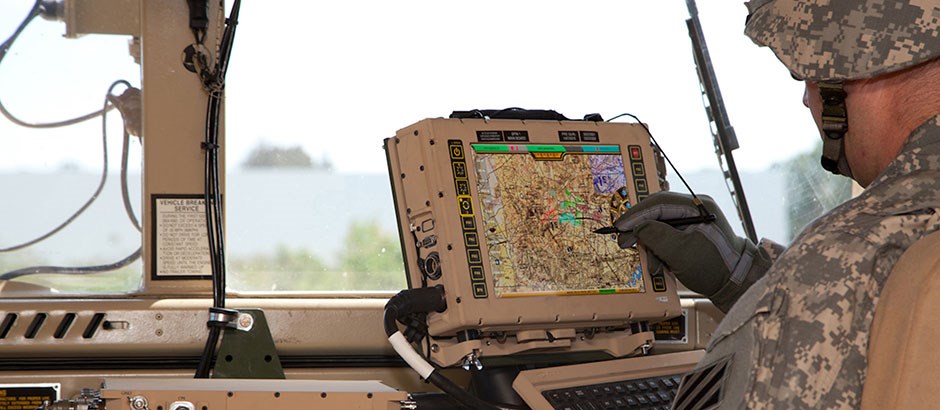This post is also available in:
 עברית (Hebrew)
עברית (Hebrew)
A new modular family of rugged computers integrates networked battle command information system capabilities onto a common computing platform. The U.S. military announced a potential $841.5 million contract to Leonardo DRS for the Mounted Family of Computer Systems (MFoCS) II program.
The program supports situational awareness, command and control, and maneuver capability with next-generation rugged computers and displays that several different configurable levels. Systems include ruggedized tablet computers, processors, keyboards, removable solid-state disks, displays, and cabling.
The Joint Battle Command-Platform (JBC-P) consists of ultra-rugged computers, software, and Suite B encryption security that enables warfighters to send and receive friendly force position location.
The foundational element of the MFoCS program is the rugged tablet that warfighters can mount in combat vehicles, as well as disconnect the tablets and continue using them while operating on foot. This enables warfighters in vehicles to share what they are seeing on their screens with warfighters operating on foot.
Battlefield commanders can work on a tablet in a combat vehicle, and then take the computer into a command post and dock it.
It essentially is a follow-on to, or advanced component of, the Army’s Force XXI Battle Command Brigade and Below (FBCB2) program, and will be interoperable with the current FBCB2 Blue Force Tracking (BFT) system. The current FBCB2 provides battlefield situational awareness to enable fast, well-informed decisions. The JBC-P is expected to enhance FBCB2 performance, and reduce the risk of fratricide.


























